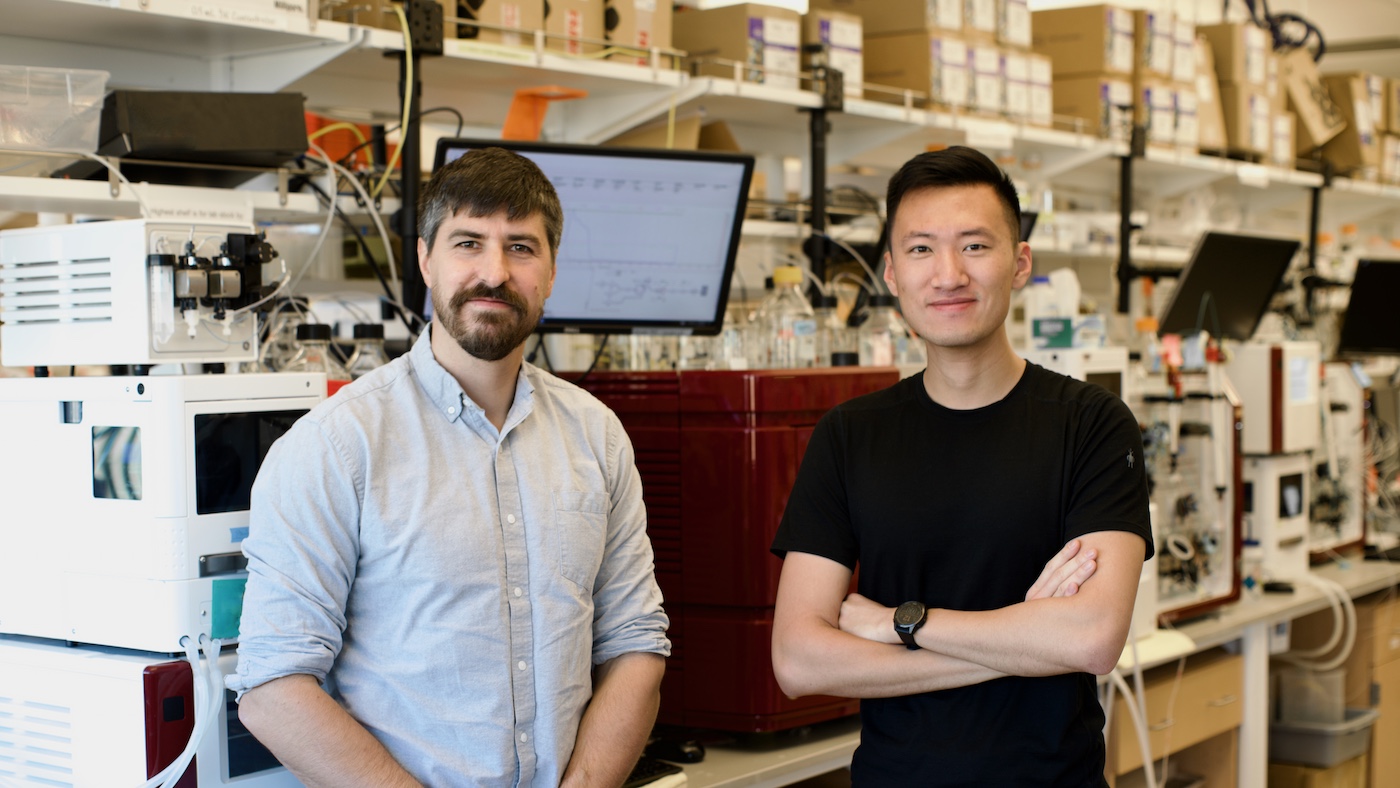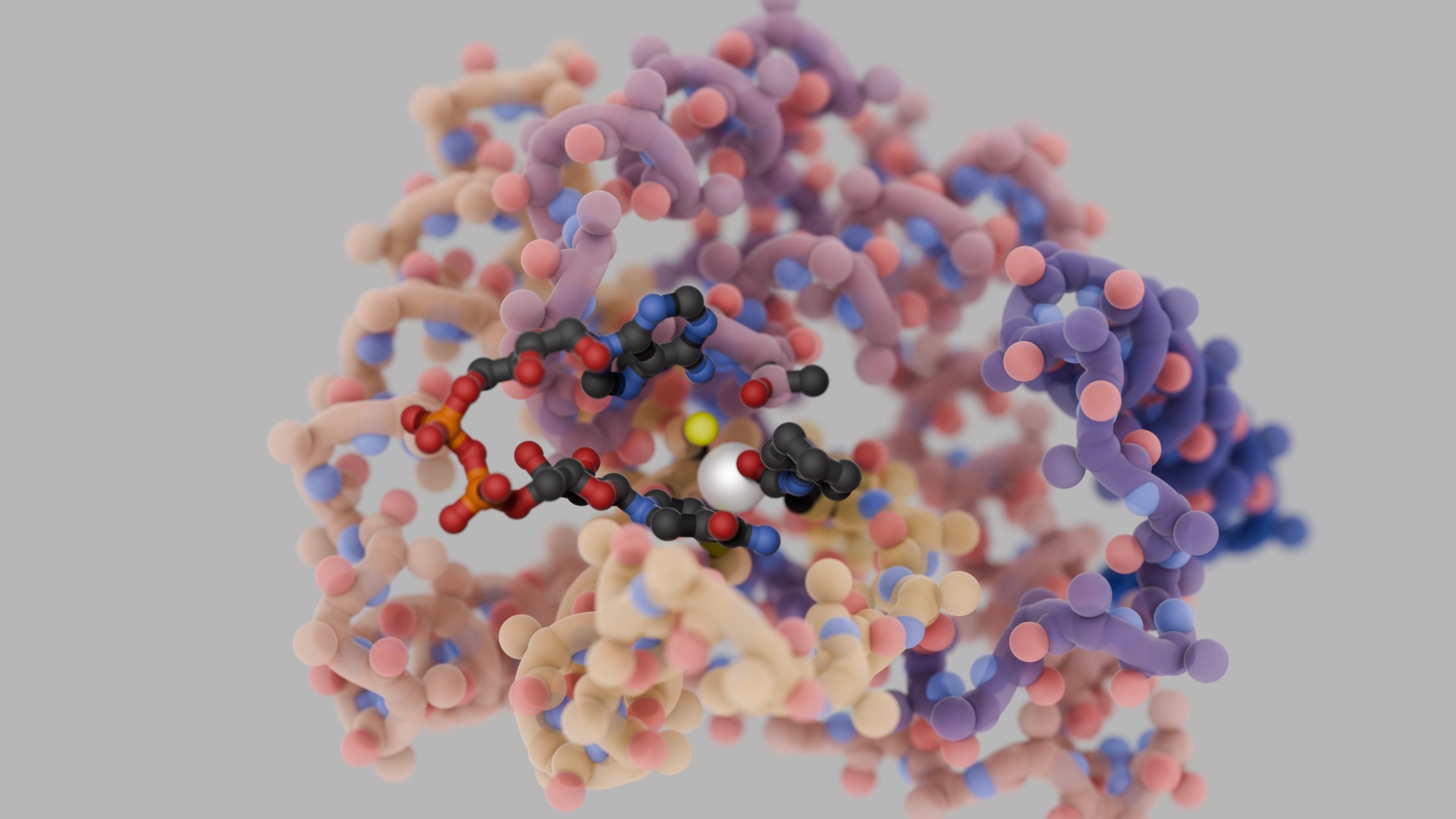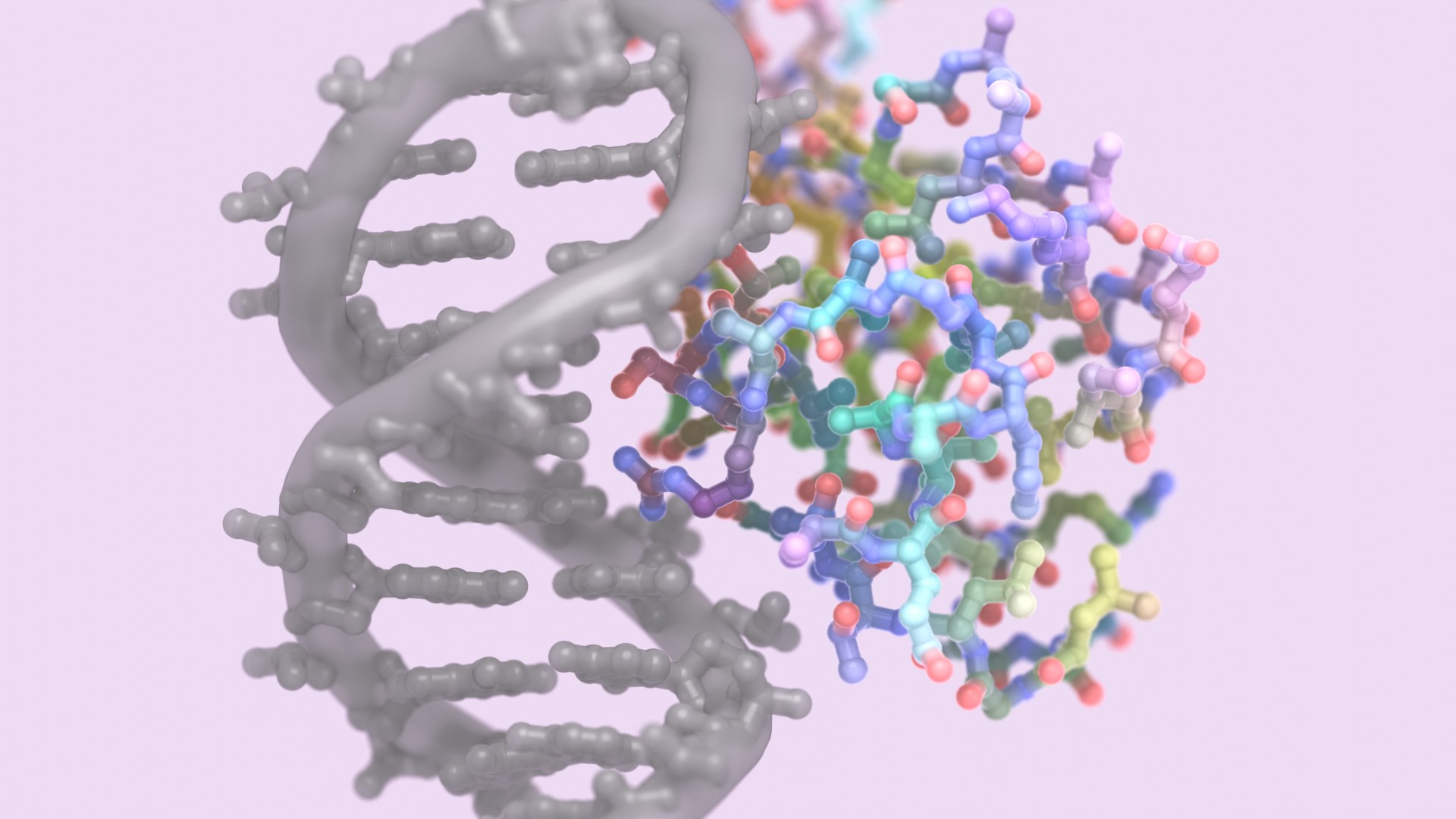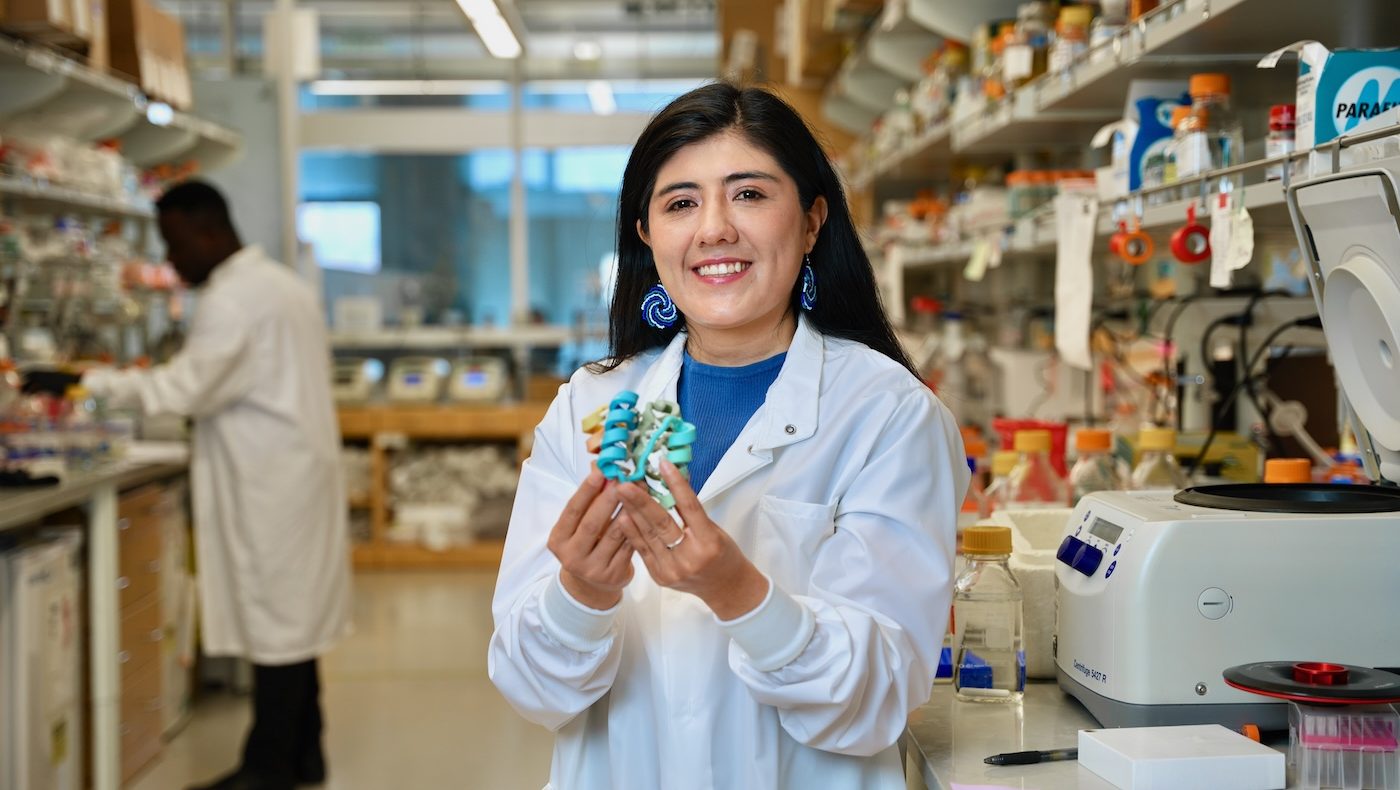With a $100,000 Phase 1 commercialization grant from the Washington Research Foundation, IPD researchers Alexis Courbet, PhD, and Jinwei Xu, PhD, are aiming to create the first direct interface between biochemistry and electronics for multi-omics applications.
This project leverages AI-based protein design to create custom protein nanopores that can be integrated within semiconductors, setting the stage for a new era in nanopore technology. It began as fundamental research on protein nanopore design here at the Institute for Protein Design.
“By bridging biology and electronics, we’re creating a new way to extract vast amounts of data from biology. This could be transformative for precision medicine, allowing for a greater understanding of human health and new approaches for treating disease faster and closer to patients,” explains Courbet.
“Beyond medicine, we also believe this technology will make it easier and cheaper to interface with the environment in a highly multiplexed way, leading to better detection of contaminants and other important substances,” adds Xu.
A New Era in Biosensing
Biosensors — which are used to detect DNA, antibodies, and other chemicals — are becoming indispensable in healthcare, environmental monitoring, and forensics. In medicine, an estimated 70 percent of clinical decisions are now underpinned by some form of diagnostic technology. Our project aims to create biosensor technology unlike any available today, with the goal of enabling more holistic and accurate disease modeling, biomarker discovery and detection, and environmental monitoring.
“While some natural protein nanopores are repurposed today primarily for DNA sequencing, their delicate structure and complex biochemistry make them challenging to work with,” notes Xu. “Recent breakthroughs in AI-enabled protein design now make it possible to create nanopores from scratch that do exactly what we want them to do. We’re hoping this will unlock a new era of nanopore technologies with utilities far beyond DNA sequencing.”
Fundamental research conducted at our Institute has shown that novel protein nanopores can be created through protein design and that these molecules can be much more robust and amenable to downstream modifications than their natural counterparts.
Biotechnology Powered By Generative AI
At the core of this project is the pioneering use of generative AI for protein design, allowing for the systematic creation and integration of custom protein nanopores directly within semiconductors. When combined with state-of-the-art nanolithographic manufacturing processes, this leads to the formation of protein-silicon devices capable of achieving extremely high nanopore sensor densities.
Courbet and Xu estimate that they can create devices with approximately one million times more protein sensors than are found in today’s commercial protein-based biosensor technologies. Such extreme densities may offer many advantages, including enhanced detection of rare compounds and significantly enhanced multiplexing, promising to redefine the landscape of multi-omic biomarker detection for patients in a healthcare setting and to expand sensitive multianalyte detection in environmental contexts.
“Compared to lipid-based nanopore approaches, we hope to greatly enhance the volume of multidimensional data being generated by our biosensing platform and to seamlessly transfer these data through bioelectronic devices to enable on-device information processing,” explains Courbet.
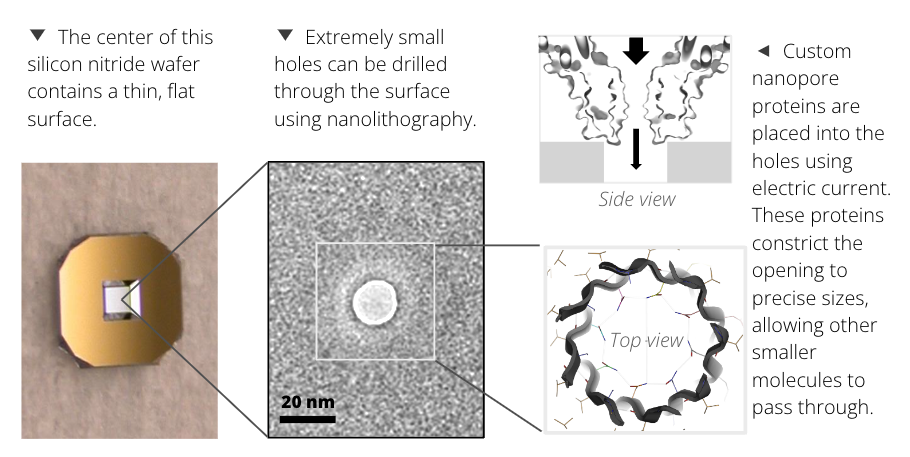
Milestones and Additional Support
The WRF-supported milestones for this project are ambitious. They include designing and characterizing protein nanopore adaptors, achieving high-resolution DNA sequencing, and developing stable electrokinetic docking of proteins on solid-state nanopores, among others.
This initial commercialization grant complements a $1.5 million discovery research grant already received from the Bill and Melinda Gates Foundation, underscoring the broad support and potential of this work. Our fundamental research on protein nanopore design has also been supported by The Audacious Project and other funders.

